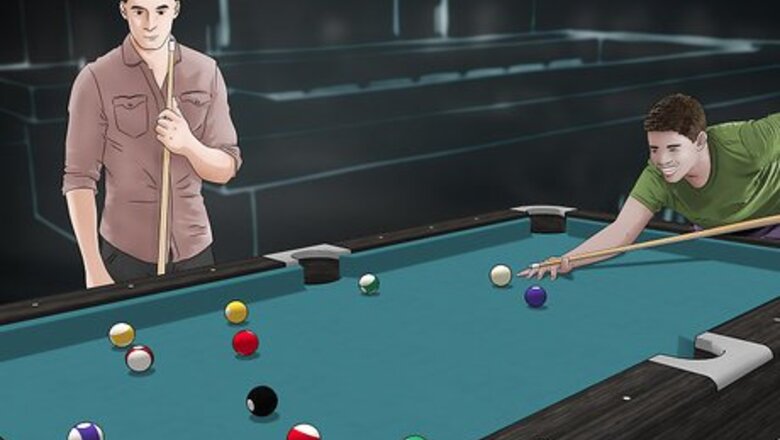
views
Upping Your Game with Strategy
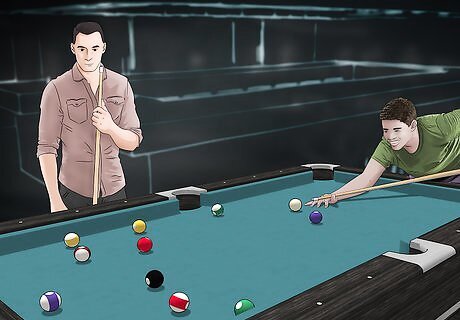
Spend some time with a pro. If you've never played pool much, consider hanging out with someone who knows the ins and outs. You could easily learn how to win at any game by learning everything a pro does before and during the game. They can give you some tips to help you play better, such as how to take a better stance when shooting.
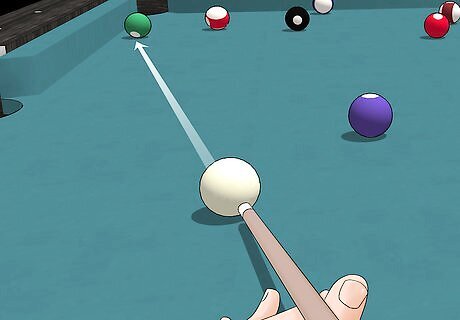
See the path. When setting up your shot, envision a line through the cue ball to make contact with your ball. This visualization will help you aim. However, once you are hitting the cue ball, focus on the contact ball, not the path.
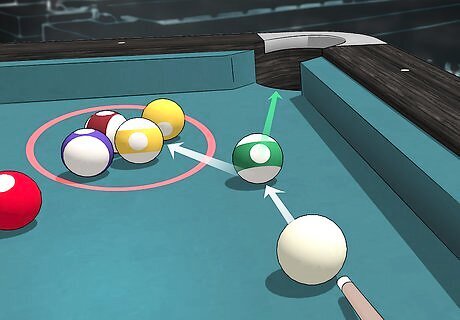
Bust up clusters of balls early. When running the table, it's best to deal with clusters as early as you can. That way, if you get on a roll later, you may be able to run the board without dealing with large clusters of balls together.
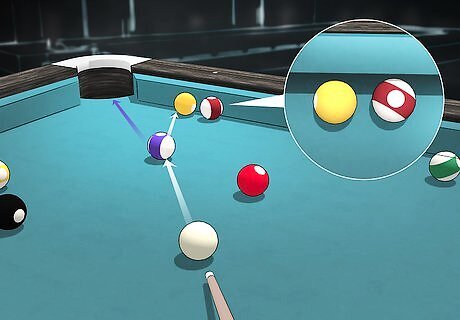
Move balls that are in the way. Deal with problem balls early in the game, either by rearranging the table or hitting those balls into a pocket. That way, you clear up the table to shoot other balls that were blocked.

Go for a safety when you don't have a clear shot. If you can't see a clear shot, you may be tempted to just hit one of your balls as hard as you can in an attempt to get it to go in a pocket. However, that's likely to end in disaster. Instead, try taking a safety shot. A safety is where you set up the cue ball in a bad position for your opponent, or you hit your own ball into a position that blocks your opponent. Keep in mind, you still have to hit 1 of your own balls even if you're just wanting to move the cue ball to an awkward position.
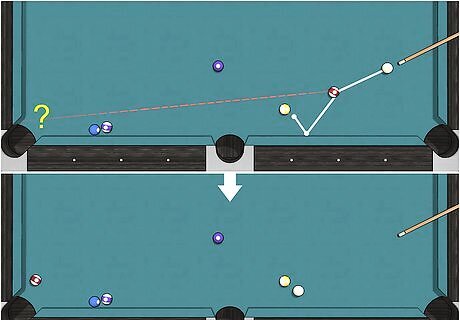
Set up 2-way shots to protect yourself when you miss. When you have a difficult shot, setting up a 2-way shot can be beneficial. The idea is that you set up the shot in such a way that if you miss, you won't have left a chance wide open for your opponent. In other words, line it up so that you are setting up a difficult shot for your opponent even if you don't make your shot.
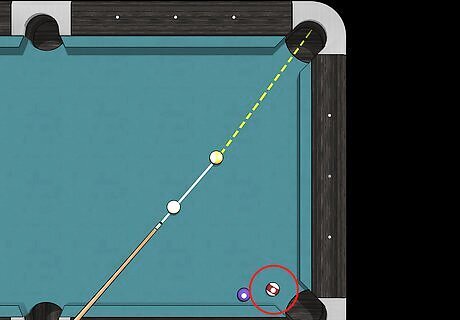
Cover the pockets. While it's tempting to hit your balls in that are sitting at the edge of pockets, it can be beneficial to leave them there. Essentially, you're blocking the pocket so your opponent can't hit a ball in there without hitting yours in, too.
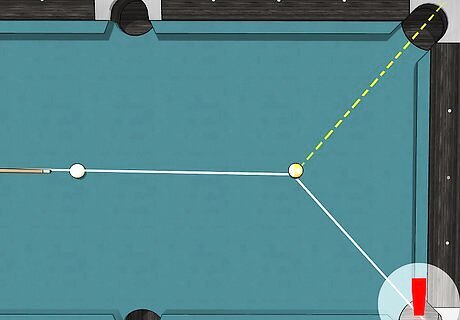
Avoid fouls. Fouls work against you because you lose your turn. Plus, if you foul during a stroke, you don't receive credit for any balls you hit into pockets. It's best to avoid fouls if at all possible. Fouls include things like hitting the cue ball into a pocket (scratching), hitting the cue ball more than once, pushing the cue ball instead of hitting it, and not hitting your balls with the cue ball before hitting another player's balls. You also can't touch the cue ball with anything but the tip of the cue stick or cause any ball to bounce off the table.

Keep an eye on your opponent. Just because you're honest about fouls doesn't mean your opponent will be. Watch your opponent as they take their shot to make sure thy aren't committing any fouls without admitting to them.
Setting Up Your Stance
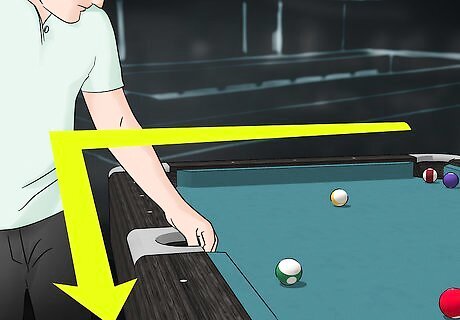
Find your shot. Walk around the table once to find the best shot. A clear shot is best, and take the time to get at table level so you can evaluate how well you can see the shot. Don't be afraid to look at alternative shots to hit the same ball.

Line up the shot. Set your cue stick down on the edge of the table in line with how you want to shoot. The cue stick should create a visual line of how you'd like to hit the cue ball.
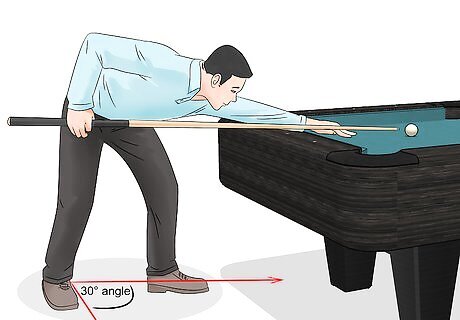
Place your feet. Put your dominant foot right behind the end of the cue stick. Your foot should be angled toward the cue stick. Your other foot should be at about a 30° angle from the cue stick. You don't want to be squarely facing the table, but rather, angled. Put equal weight on both legs.
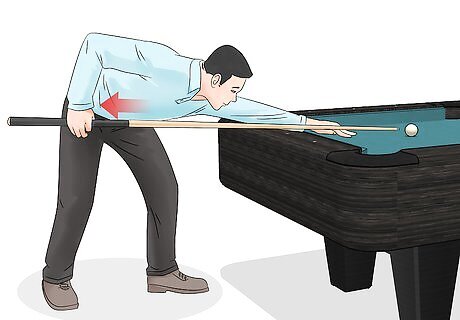
Clear your hip with the cue stick. Grip the pool stick and lean forward. Move the cue stick backwards and forward a bit to make sure you won't hit your hip when trying to take a shot. If you're not clearing your hip, adjust your stance.
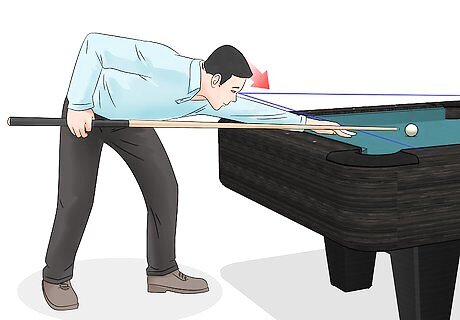
Keep your head down. As you move to take your shot, lower your head towards your cue stick. Keep your head tilted up a bit so you can see along the cue stick and aim your shot.
Working on Your Grip and Stroke
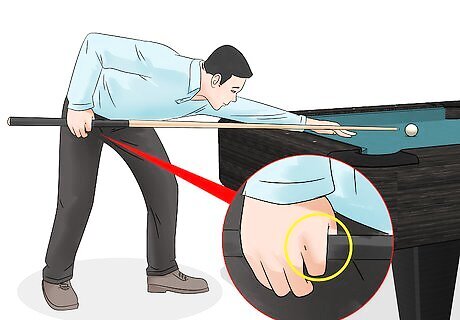
Grip the cue with 2 fingers. Stick to using your index finger and your thumb on your gripping hand. Point both your thumb and finger downward around the cue, and then wrap your index finger around the bottom of the cue. Your thumb should just rest on the cue. When working on your grip, keep your other 3 fingers away from the cue. Eventually, once you get the feel for the 2-fingered grip, you can lightly rest the other fingers against the cue without gripping with them.
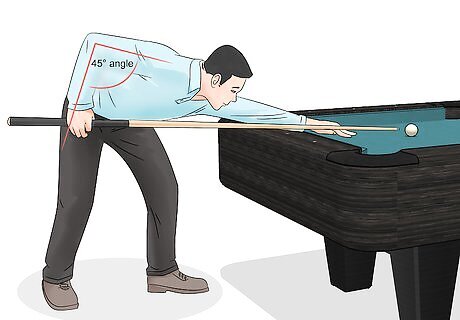
Place your grip so that your arm is at a 45° angle. Your grip will move up and down the cue based on the shot you're making. For instance, if you need more of the cue stick on the table, you're grip will be further down the cue stick. However much room you have, your forearm should come straight up from the cue stick and then make a 45° angle to your body.
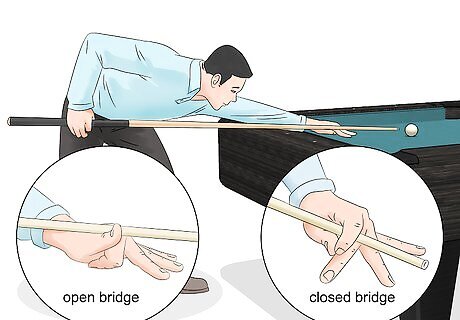
Set up your bridge. You can use 1 of 2 bridges, the open or the closed bridge. With the closed bridge, you rest the cue stick on your middle finger and thumb, which are placed on the table. Your index finger loops loosely over the cue stick, and your other fingers are splayed out. With an open bridge, rest the cue stick on your thumb and index finger with your other fingers splayed out. Use whichever one feels most comfortable to you. If you need to reach the cue ball over another ball, you can also use a mechanical bridge, a device you set on the table.
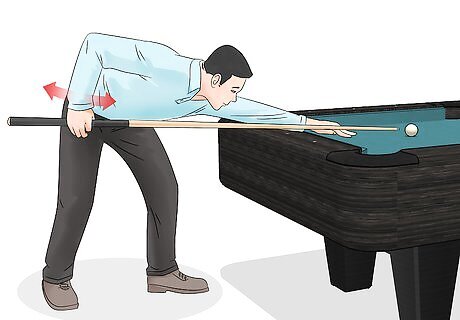
Use a pendulum motion for your stroke. If your arm is in the correct position, you should be able to swing just your forearm backwards and forwards without moving your upper arm. This movement is pendulum-like, and it creates a smooth motion forward.
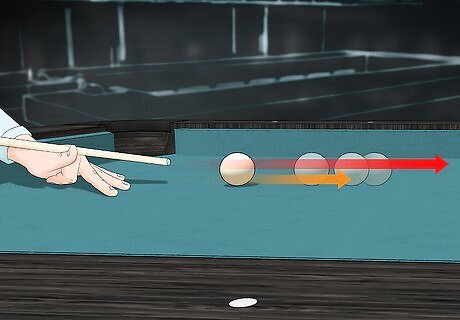
Adjust your power for the shot. It's tempting to just hit the ball as hard as you can. However, you don't know where the cue ball may end up if you do that. Try to just use enough power to accomplish the shot and no more. It will take practice to learn how much power to give each shot.
Working on Aim
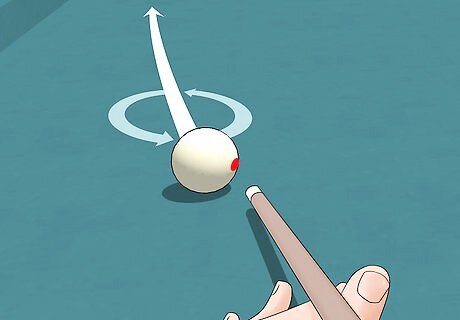
Hit the ball on the right edge to create a counter-clockwise spin. This technique, called the "Right English," is useful in causing a slight curve in the ball's path across the table. When it hits another ball, that ball will spin in the opposite direction. In addition, when the cue ball hits the side rail, it will go in another direction. Left English refers to hitting the ball on the left edge, which produces the opposite effect.

Avoid scratching by hitting the ball at the bottom edge. If you hit the ball on the bottom edge, it creates backspin. That means that when it hits another ball, the cue will spin backward instead of moving forward. If you're trying to avoid scratching (hitting the cue ball into a pocket), creating backspin can help you out.
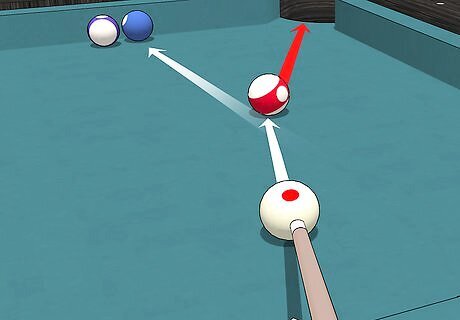
Keep the ball moving forward by hitting the top edge. Hitting the top edge has the opposite effect of hitting the bottom edge. It creates topspin, which means it keeps going forward after hitting another ball. This shot can be helpful if you need to hit more than 1 ball in a shot.
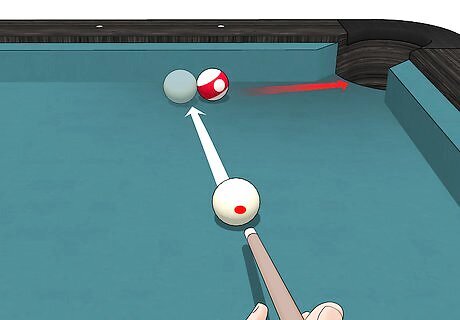
Hit the contact ball with the edge of the cue ball. Generally, when you're setting up a shot, you want to aim so that the edge of the cue ball makes contact with the other ball. You should set up an almost tangential shot, instead of hitting the contact ball dead on.




















Comments
0 comment